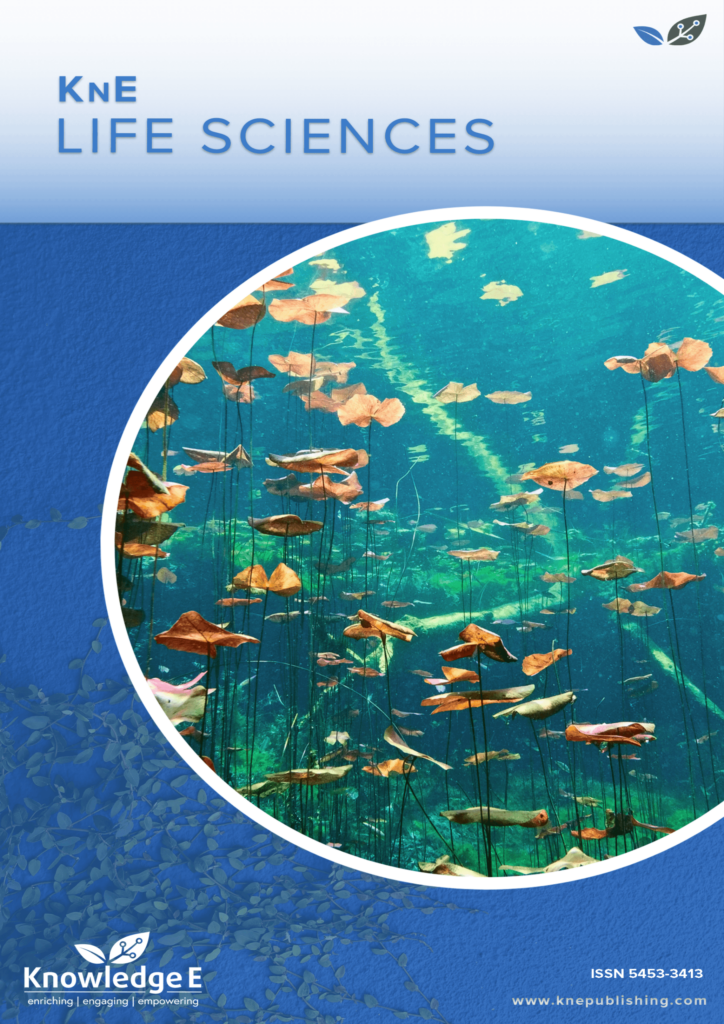
KnE Life Sciences
ISSN: 2413-0877
The latest conference proceedings on life sciences, medicine and pharmacology.
POTENTIAL OF NOSTOC MUSCORUM CULTURED IN BG-II MEDIUM AS BIODIESEL FEEDSTOCK SOURCE: EVALUATION OF NUTRIENT REQUIREMENT FOR CULTURE AND ITS DAILY LIPID CONTENT
Published date:Feb 01 2015
Journal Title: KnE Life Sciences
Issue title: International Symposium on Aquatic Product Processing (ISAPPROSH) 2013
Pages:103-113
DOI: 10.18502/kls.v1i0.93
Authors:
Abstract:
Increment of industrial development and energy demands for transportation and electricity have increased diesel-fuel uses to fulfil global energy needs. Carbon emission as impact of high fossil diesel use which pollutes the air gradually increases green house gases (GHG) and increases the intensity of acid rains. Furthermore, scarcity of fossil-fuels resources has caused high price of diesel-fuel which in turn to have increased the prices of all commodities. Nostoc muscorum is filamentous Cyanobacteria species which lives both terrestrial and freshwater aquatic environment. This strain has good ability in producing high biomass and potential in producing lipid. In where, Nostoc muscorum has potential as biodiesel feedstock alternative of food-plants sources. This study was conducting to evaluate the potential of Nostoc muscorum cultured in BG-II medium as biodiesel feedstock source. Evaluation of the nutrient requirement of Nostoc muscorum cultured in BG-II medium was done through assimilation of nitrate (NaNO3)-phosphate (K2HPO4). Biomass production as growth parameter was measured by weighing the dried biomass for 14 days of culture. Daily lipid production was evaluated by lipid extraction using Soxhlet method. The result showed that Nostoc muscorum cultured in BG-II medium required 644.6795 mg/L of NO3- and 25.1566 mg/L of HPO4- with the highest biomass production 0.21 grams/300 mL. Furthermore, Nostoc muscorum as multicellular Cyanobacteria could grow well in BG-II medium at SGR 0.0964 μ/day. Lipid production of Nostoc muscorum during cultivation in BG-II for 14 days decreased day by day. The highest lipid production was reached up in day 4th of culture that was 9.53 mg/g. Based on this study, Nostoc muscorum has good potential as biodiesel feedstock through producing high biomass in BG-II medium.
Keywords: Nostoc muscorum, Synechococcus elongatus, Tofu wastewater, Lipid content, Cell disruption, Biodiesel.
References:
Amaro H.M., Guedes A.C., Malcata F.X. 2011. Advances and perspectives in using microalgae to produce biodiesel. Applied Energy (88), 3402-3410 p.
Atabani A.E., Silitonga A.S., Badruddin I.A., Mahlia T.M.I., Masjuki H.H., Mekhilef S. 2012. A comprehensive review on biodiesel as an alternative energy resource and its characteristics. Renewable and Sustainable Energy Reviews (16), 2070- 2093p.
Demirbas A. 2007. Importance of biodiesel as transportation fuel. Energy Policy (35), 4661-4670 p.
EIA. 2012. Short term energy outlook. http://www.eia.gov/forecasts/steo/archives/May12.pdf [May 15th 2012].
Fogg G.E, Stewart W.D.P, Fay P, Walsby A.E. 1973. The Blue-Green Algae. New York: Academic Press.
Hakanson L, Bryhn A.C, Hytteborn J.K. 2007. On the issue of limiting nutrient and predictions of cyanobacteria in aquatic systems. Science of the Total Environment (379), 89-108 p.
Han F, Huang J, Li Y, Wang W, Wan M, Shen G, Wang J. 2013. Enhanced lipid productivity of Chlorella pyrenoidosa through the culture strategy of semi- continuous cultivation with nitrogen limitation and pH control by CO2. Bioresource Technology [Accepted manuscript].
Jayed M.H. Masjuki H.H., Kalam M.A., Mahlia T.M.I., Husnawan M., Liaquat A.M. 2011. Prospects of biodiesel engine vehicles in Malaysia and Indonesia. Renewable and Sustainable Energy Reviews (15), 220-235 p.
Klok A.J, Martens D.E, Wijffels R.H, Lamers P.P. 2013. Simultaneous growth and neutral lipid accumulation in microalgae. Bioresource Technology (134), 233- 243 p.
Malakar E, Goswani R.C.D, Kalita M.C. 2012. A study on two potential BGA isolates Cylindrospermum majus and Nostoc muscorum of Assam, North-East India. Archives of Applied Science Research 4(1), 487-496 p.
Markou G. and Georgakakis D. 2011. Cultivation of filamentous cyanobacteria (blue-green algae) in agro-industrial wastes and wastewater: a review. Applied Energy (88), 3389-3401 p.
Parmar A., Singh N.K., Pandey A., Gnansounou E., Madamwar D. 2011. Cyanobacteria and microalgae: a positive prospect for biofuels. Bioresource Technology (102), 10163-10172 p.
Powell N, Shilton A, Chisti Y, Pratt S. 2009. Towards a luxury uptake process via microalgae-defining the polyphosphate dynamics. Water Research (43), 4207- 4213.
Rai A.K, Kashyap A.K, Gupta S.L. 1981. ATP-dependent uptake of nitrate in Nostoc muscorum and inhibition by ammonium ions. Biochimica et Biophysica Acta (BBA)-General Subjects 674(1), 78-86 p.
Shalaby E.A. 2011. Algal biomass and biodiesel production. In M. Stoytcheva and G. Montero (Eds). Biodiesel-Feedstock and Processing Technologies (pp111-132). InTech: Croatia.
Singh J. and Gu S. 2010. Commercialization potential of microalgae for biofuels production. Renewable and Sustainable Energy Reviews (14), 2596-2610 p.
Su Y, Mennerich A, Urban B. 2012. Coupled nutrient removal and biomass production with mixed algal culture: impact of biotic and abiotic factors. Bioresource Technology (118), 469-476 p.
Thompson P.A, Jameson I, Blackburn S.I. 2009. The influence of light quality on akinete formation and germination in the toxic cyanobacterium Anabaena circinalis. Harmful Algae (8), 504-512 p.